
Pressure-sensitive labels (PSLs) have become more than just a convenient labeling option. They’re a cost-effective, versatile solution that helps brands keep up with changing product demands, regulatory requirements, and shelf appeal goals.
Since their start, pressure-sensitive labels have significantly evolved and are now a critical component of modern packaging solutions. They go back to the early 20th century when basic forms of pressure-sensitive tapes first appeared. Over the decades, adhesive technology has advanced, transforming it into highly functional and versatile product labels.
Why pressure-sensitive labels are a top choice for manufacturers:
- Cost-Effective: Minimal waste and efficient application lower production costs.
- Versatile: Compatible with bottles, jars, boxes, and irregularly shaped containers.
- Customizable: Available in multiple materials, finishes, and print effects for branding and compliance.
- Efficient: Easy to apply by hand or integrate into automated labeling systems.
- Durable: Resistant to handling, moisture, and temperature changes to maintain quality over time.
Because of these benefits, pressure-sensitive labels have become indispensable in industries ranging from food and beverage to pharmaceuticals.
What Are Pressure-sensitive Labels?
Pressure-sensitive labels (PSLs) are self-adhesive labels that bond to a surface when pressure is applied. There is no heat, water, or solvents required. Each label is made of multiple layers, including a face material (like paper or film), a pressure-sensitive adhesive, and a release liner. When applied, the adhesive layer activates through pressure alone, creating a secure bond on bottles, jars, boxes, or even irregularly shaped containers.

Compared to traditional label types, PSLs are designed for speed and flexibility:
- Glue-applied labels require wet adhesives and specialized equipment, making the application process complex and messy.
- Shrink sleeves need heat tunnels or steam to conform product labels to containers, which means higher energy use and pricier equipment.
PSLs simplify the process while still offering a high-end, professional look. They work seamlessly on both manual and automated labeling lines, making them a popular choice for businesses seeking efficiency without sacrificing presentation.
Why Choose Pressure-Sensitive Labels?
Pressure-sensitive labels stand out for their versatility and efficiency in labeling applications. Here is why they are a preferred choice for many businesses, especially for bottle labeling:
- Simplified Application Process: Pressure-sensitive labels adhere to surfaces with just pressure, eliminating the need for heat, solvents, or water. This reduces equipment needs and simplifies the production line compared to other label types like shrink sleeves or glue-applied labels.
- Quality Appearance: Smooth adherence to curved surfaces gives bottles a sleek, professional look that enhances brand image.
- Durability: Resistant to moisture and temperature changes, PSLs maintain integrity and legibility under various storage conditions, ensuring continuous brand visibility and regulatory compliance.
- Reduced Labor and Waste: Lower labor requirements and minimal waste during application make pressure-sensitive labels a cost-effective option.
- Adaptability: Suitable for various packaging designs and sizes, pressure-sensitive labels can be used across different product lines without the need for additional equipment. This is particularly beneficial for short runs and seasonal products.
- Environmental and Cost Benefits: By minimizing material waste and requiring less complex equipment than other label types, pressure-sensitive labels help reduce production costs and environmental impact. This makes them a sustainable, budget-friendly choice.
Industry Uses for Pressure-Sensitive Labeling
Pressure-sensitive labels are one of the most adaptable labeling options available, making them ideal for a wide range of industries. Their durability, ease of application, and ability to enhance branding make them a go-to choice for many types of products.
Food & Beverage
- Craft beer bottles and cans
- Artisan food packaging, like sauces, jams, or baked goods
- Ready-to-eat meals and deli containers
Health & Beauty
- Lotion and shampoo bottles
- Glass jars for skincare products
- Essential oil and fragrance packaging
Nutraceuticals
- Vitamin and supplement containers
- Protein powder tubs and shake bottles
- Herbal remedy packaging
Household Goods
- Cleaning supply bottles and sprays
- Storage jars and organizers
- Air freshener and candle containers
With their ability to conform to different shapes and materials, pressure-sensitive labels make it easy for businesses to deliver professional, durable branding across every product line.
Understanding Different Types of Pressure-Sensitive Labels
There are different types of pressure-sensitive labels designed to meet various product needs and environmental conditions. Each label consists of three main components: facestock, adhesive, and liner, and each can be customized based on your product’s requirements.

Label Types by Performance:
- High-Tack Labels: Provide strong adhesion to challenging surfaces, like textured or curved containers.
- Repositionable Labels: Can be moved or adjusted after application without leaving residue.
- Freezer-Grade Labels: Engineered to maintain adhesion and legibility in cold storage or freezing temperatures.
Facestock Options:
- Paper: Cost-effective and ideal for indoor, dry applications like consumer goods or food packaging.
- Film (Vinyl, Polypropylene, or Polyester): Durable and resistant to moisture, chemicals, and UV exposure, perfect for outdoor or high-moisture environments.
Adhesive Types:
- Permanent: Creates a strong, lasting bond for long-term applications.
- Removable: Allows for clean removal without damaging the surface, great for temporary product labels.
- Repositionable: Offers short-term flexibility for alignment and adjustments during application.
Liner Materials:
- Paper Liners: Standard for most applications; compatible with a wide range of label shapes and sizes.
- Film Liners (PET or Polypropylene): Smoother and more durable, helping improve label dispensing speed on high-volume, automated lines.
By mixing and matching these elements, businesses can create pressure-sensitive labels that perform reliably in any industry, while ensuring the right balance of durability, aesthetics, and cost-efficiency.
Reliable Pressure-Sensitive Labeling Equipment for Every Product
To get the most out of pressure-sensitive labels, the right equipment is essential. These product labels are compatible with a wide range of equipment, each designed to meet different production speeds, product types, and automation needs.
Types of Labeling Equipment:
- Inline Labelers: Ideal for straight-line production setups, these systems apply labels as products move along a conveyor. They’re versatile, easy to integrate, and work well for medium- to high-speed lines.
- Rotary Labelers: Best for high-speed, high-volume operations, rotary systems use a rotating platform to apply labels to containers quickly and precisely, often used in beverage and pharmaceutical industries.
Levels of Automation:
- Semi-Automatic Systems: Great for small to mid-size production runs, these systems provide consistent label placement while allowing operators to manually load or align products.
- Fully Automatic Systems: Designed for continuous, high-volume production, these systems handle labeling start to finish, with minimal operator involvement, maximizing efficiency and throughput.

At Pack Leader USA, we offer a full range of pressure-sensitive labeling solutions designed to fit any production scale, including:
- PL-501 Wrap Around Labeler: Fully automatic with dependable speed and precision for round containers. With its one-touch screen, you can quickly adjust settings to label one side of flat-surfaced containers.
- PL-501-NL Wrap Around Labeler: Engineered for the food and beverage industries, this system can label both the body and neck of round containers, with an optional two-body front and back label.
- PRO-515 Inline Labeler: Built for round containers with the added benefit of a One Side Apply option. At the tap of a button, you can switch settings to label flat-surfaced containers with ease.
By matching the right equipment to your production needs, you can get consistent, efficient label application that keeps products looking professional and production lines running smoothly.
Mastering the Art of Pressure-Sensitive Label Design
Creating an effective label design is critical for capturing consumer attention and driving sales. The design process should focus on essential elements such as color, typography, imagery, and layout.
Vibrant colors draw the eye, while clear, legible typography ensures that essential information is easily accessible. Relevant imagery should align with the brand’s message, enhancing the product's marketability. The layout needs to be cohesive and balanced, effectively using the space to convey the product's unique value proposition and ensuring the label looks good from various angles and distances.

4 Tips for Creating Eye-Catching Pressure-Sensitive Labels:
- Balance Creativity and Compliance: Ensure product labels incorporate mandatory details like ingredient lists, usage instructions, and safety warnings without sacrificing visual appeal.
- Contrasting Colors: Use colors that stand out against the background to make text easy to read.
- Clear Text Hierarchies: Arrange text in a logical order that guides the reader's eye through the label.
- Utilize Icons: Use icons to communicate key information succinctly, enhancing understanding without clutter.
Common Label Design Mistakes to Avoid:
- Improper Bleed or Margins: Without adequate bleed, designs can look off-center or cut off after printing.
- Low-Resolution Artwork: Blurry or pixelated images reduce the professional look of your product.
- Poor Contrast: Light text on light backgrounds (or dark on dark) can make product labels hard to read.
- Incorrect Sizing: Labels that don’t match the container’s shape or size can wrinkle, misalign, or look unprofessional.
- Overcrowding: Packing too much text or imagery can overwhelm consumers and dilute your brand message.
By focusing on strong design fundamentals, you can ensure that your pressure-sensitive labels meet compliance requirements, stand out on the shelf, and strengthen customer trust.
Choosing the Right Pressure-Sensitive Label for Your Product
When it comes to choosing the right pressure-sensitive labels, consider factors like the surface material, the environmental conditions it will encounter, and the longevity required of the label. For products that experience frequent handling, durable product labels with stronger adhesives are preferable.
The label’s visual appeal is essential. It enhances brand recognition and significantly impacts customer attraction. Balancing functional requirements with aesthetic considerations is crucial in selecting the most suitable pressure-sensitive label for any product.
Checklist of Factors to Consider When Selecting a Label
- Surface Material: Is the packaging made of glass, plastic, metal, or a textured surface?
- Exposure Conditions: Will the product face moisture, freezing temperatures, or frequent handling?
- Packaging Type: Is the container round, flat, or uniquely shaped?
- Branding Requirements: Are you incorporating specialty finishes, bold graphics, or regulatory details?
- Durability Needs: Will the label need to withstand storage, transport, or harsh environments?
Evaluating these factors before production ensures your product labels adhere properly, maintain visual appeal, and perform reliably from manufacturing through to the customer’s hands.
Stay Compliant Without Slowing Production
Labeling regulations are crucial for ensuring consumer safety and transparency, and they vary significantly across different industries.
In the food and beverage industry, product labels must clearly display FDA-mandated nutritional information, ingredient lists, and allergen statements (such as disclosures for milk, nuts, or gluten).
Pharmaceuticals require labels that include drug facts, dosage instructions, and potential side effects to comply with FDA guidelines.
The cosmetics sector, regulated by both the FDA and international bodies depending on the market, demands labels that list all ingredients, directions for use, and cautionary notes to protect consumers and avoid misbranding.

Pressure-sensitive labels are a simple solution for meeting these regulatory demands. Their versatility allows you to include comprehensive regulatory information in a format that is both clear and legible.
Advanced adhesive technologies ensure that product labels remain securely attached to products throughout their lifecycle, even under extreme conditions. Customizing PSLs also allows companies to swiftly update labels in response to regulatory changes, ensuring ongoing compliance and avoiding potential legal or financial consequences.
Smart, Sustainable Innovations in Pressure-Sensitive Labels
Pressure-sensitive labels are rapidly evolving. Recent innovations include smart labels that integrate Near Field Communication and Radio Frequency Identification technologies. These allow brands to engage interactively with consumers through their packaging.
Additionally, developments in eco-friendly adhesives and substrates are supporting sustainability goals by reducing the environmental impact of product labels.
To further support sustainable packaging initiatives, manufacturers are exploring:
- Recyclable Facestocks and Liners: Using label materials compatible with standard recycling streams, including PET and paper options.
- Biodegradable Adhesives: Formulated to break down naturally, reducing landfill impact without sacrificing performance.
- Linerless Label Technology: Eliminates the silicone-coated liner entirely, reducing material use and waste in production.
- Waste Reduction Practices: Leveraging digital printing for small runs to minimize overruns, and designing labels that use less material without compromising performance.
Labeling continues to trend toward greater personalization and sustainability. Digital printing technologies allow for small-run, high-variety labels at cost-effective prices, while recycled-content and biodegradable materials appeal to eco-conscious consumers.
FAQs About Pressure-Sensitive Labels
What’s the difference between permanent and removable adhesive?
Permanent adhesives are designed to create a long-lasting bond that won’t peel off under normal conditions, making them ideal for products meant to remain labeled throughout their lifecycle. Removable adhesives allow labels to be peeled away cleanly without leaving residue, which is perfect for temporary promotions, reusable containers, or products that require frequent relabeling.
Can pressure-sensitive labels withstand moisture or cold?
Yes—when paired with the right facestock and adhesive, pressure-sensitive labels can handle a variety of challenging environments. Options like freezer-grade adhesives and moisture-resistant films ensure product labels stay intact and legible in refrigerated, frozen, or high-humidity conditions.
Are these labels FDA-compliant?
Pressure-sensitive labels can be designed to meet FDA requirements, especially for food, beverage, pharmaceutical, and cosmetic products. This includes ensuring labels remain secure and legible, display mandatory information like nutritional panels, allergen statements, or dosage instructions, and use materials safe for direct or indirect food contact when required.
Upgrade Your Labeling for Stronger Shelf Appeal
Pressure-sensitive labels deliver the perfect mix of versatility, efficiency, and durability, making them one of the most reliable solutions for packaging demands. These product labels adapt to a wide range of surfaces and environments while providing a professional, brand-forward appearance. With customizable materials, adhesives, and finishes, PSLs help businesses stay compliant, stand out on the shelf, and streamline production.
To get the most out of pressure-sensitive labeling, pair the right label design with the right labeling equipment. At Pack Leader USA, we offer a full range of high-performance labeling equipment, from tabletop solutions for growing brands to fully automated systems for high-volume operations.
Ready to improve your packaging line? Explore our labeling equipment or download our free guide, The Practical Guide to Choosing Labeling Equipment, to find the best solution for your products and production goals.
.webp?width=200&height=114&name=2x-Packleader-logo-large%20(1).webp)

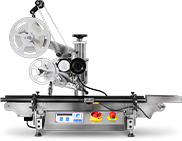


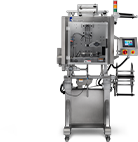
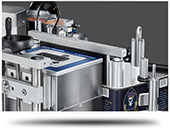
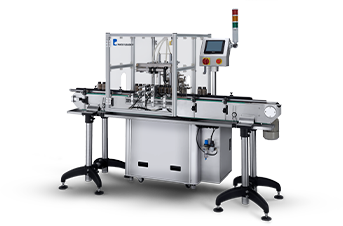

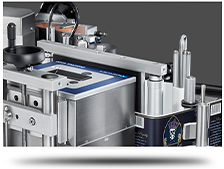





.webp?width=360&name=2x-color-logo%20(1).webp)